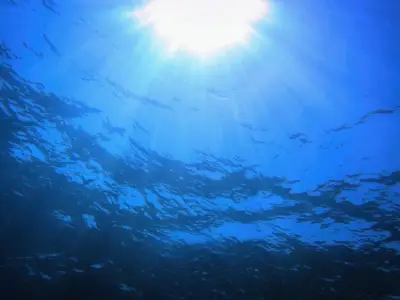The ocean is the lifeblood of all existence on Earth, covering 70% of our home planet's surface. For as long as mankind has lived, our attention has been drawn to the world’s waters for sustenance, commerce, wanderlust, and inspiration.
We may feel we have conquered the surface with our shipping canals and pleasure cruises, but despite the best efforts of marine biologists and explorers, the underwater realms remain very much a mystery. Odd though it may seem, we know more about outer space than we do about what happens below the surface of the ocean. In fact, 80% of the deep blue remains unexplored and unmapped.
Nowhere is this lack of understanding more profoundly felt by ocean experts than with the Mariana Trench.
Location of the Mariana Trench
Viewed from the sandy shores of Guam, an island almost exactly equidistant from the capitals of Japan, Papua New Guinea and the Philippines, the North Pacific Ocean appears turquoise and tranquil.
However, unseen by the human eye, beneath four of the five depth zones of the ocean - the Sunlight Zone, the Twilight Zone, the Midnight Zone and the Abyss - lies the Mariana Trench.

At 6033.5 fathoms deep - over 36,000 feet below sea level, to you and me - it is the deepest known point on Earth. Measuring 2542km (1,580 miles) long and stretching 69km (43 miles) wide, the vast scale of this revered monument of Mother Nature formed when tectonic plates collided is impossible to contemplate.
To put it into perspective, at its deepest point - named The Challenger Deep after the British ship, Challenger II, which first pinpointed and surveyed it in 1951 - the Mariana Trench is thousands of feet deeper than Mount Everest is high.

It is perpetually dark and near freezing. At just 150m below sea level, colours are no longer visible to the human eye. Any depth below 200m sees the crushing pressure of the water above become inhospitable to humans. Challenger Deep measures 11,034m below sea level.
Life Forms
While there’s no way a human could survive unaided in the Mariana Trench, there is still an abundance of life. One mud sample taken from Challenger Deep yielded nearly 200 different microorganisms.
Thus, the marine biology and ecology of this highly unique environment are full of oddities and wondrous creatures who’ve adapted beyond imagination to their surroundings.
The Mariana Trench is even home to a Guinness World Record-breaking fish. The Mariana Snailfish was discovered lurking at depths of 26,000 feet, the deepest discovery of a fish ever recorded. Otherwise known as the Ethereal Snailfish, it has evolved to withstand pressure equivalent to 1600 elephants standing on the roof of one small car.
While most of the creatures down there are microscopic, invisible to the human eye and somewhat resembling overgrown slugs or earwigs, others are eerily and hauntingly beautiful. Bioluminescence is a common trait of deep sea creatures, some of which have adapted to create their own light among the pitch black to reproduce and catch their unsuspecting prey like the Seadevil Anglerfish, Deep-Sea Dragonfish and Hatchetfish.

With no light comes a distinct lack of food. Some deep-dwelling critters consume decaying matter from creatures that lived and died in the upper zones of the ocean. Hagfish, for example, feed on the carcasses while Osedax - otherwise known as zombie worms - consume the bones.
But the creatures who live in the Mariana Trench aren’t just opportunistic scavengers simply surviving within the harshest conditions. With ancient origins dating back 8,000 years, and 20 rows of trident-shaped teeth, the Frill Shark strikes its prey with the motion and dexterity of a land snake. Meanwhile, floating vertically at about 6,500 feet or below, the Telescope Octopus is unique among octopods thanks to its translucent skin and protruding eyes - all the better to see predator and prey with.
The Future of the Mariana Trench
No wonder those who look to the sea for its changeable and unpredictable nature - from serene calm to wild power - are also fascinated by its mysterious depths and the creatures who dwell in this most inhospitable of environments. Fathoms down, some hope to find curative qualities, new species from which we can learn, and the simple pleasure of discovery where so few have ventured before.
However, some look to the depths of the ocean for other reasons; mining, waste disposal, and commercial deep-sea fishing.
The more we learn the secrets of the Mariana Trench - and other deep-sea ecosystems - the better we can protect them from potentially harmful human activity and climate change, thus preserving the weird and wonderful world at the bottom of the ocean.
At the time of publishing, entering the code LEARNING in the checkout will reduce the price of our
Marine Biology Diploma Course to £29.





